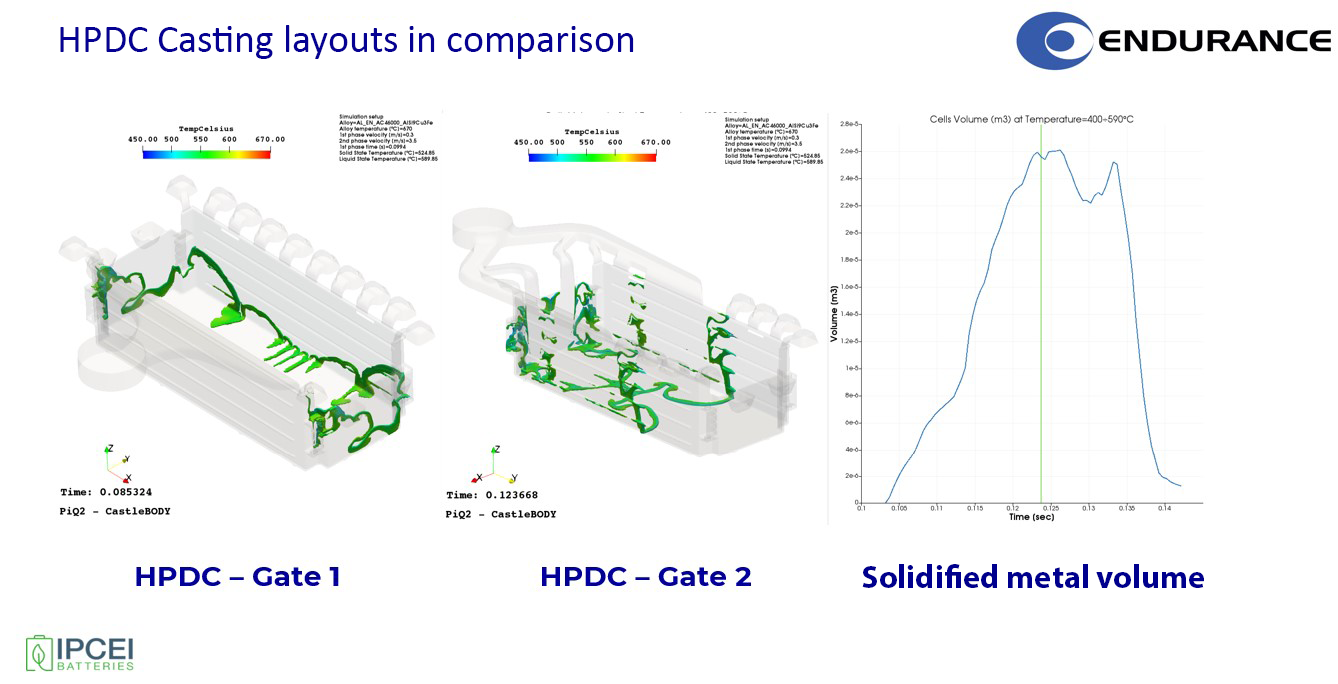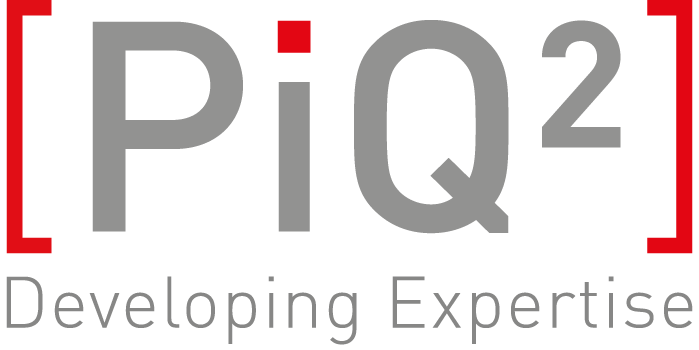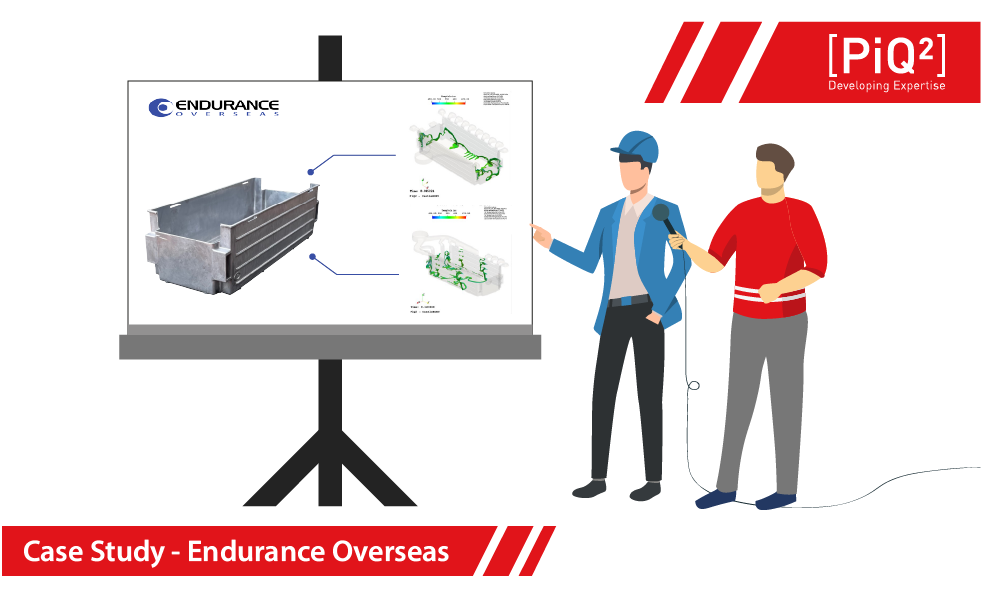Thanks to a long-lasting and well-established partnership, the opportunity arose for an informal talk between PiQ² and Ing. Claudio Mus, Technical – R&D Director of Endurance Overseas.
Endurance, a prestigious Tier 1 in the automotive industry, is the holding company that manages the Group’s EMEA companies. It deals with producing, machining, and assembling aluminum castings (HPDC and gravity castings), forged components, and injection moulding. Endurance Overseas plants are located in Germany and Italy and are 100% focused on the automotive market.
Endurance offers its customers a complete service: from design and prototyping to industrialisation and production.
How did you come into contact with PiQ²?
We have known the development team for more than 20 years. Still, the first actual collaboration dates back to 2016, thanks to the Icaro project financed by the Piedmont region granted to Endurance for the development of the die-casting process. The need was mainly to install and equip the Chivasso facility with simulation software for the aluminum die-casting process. Chivasso was the first site of the Endurance group that was beginning to make its way toward component development and innovation.
At that time there was no simulation software in Endurance, so we used to rely on external service providers. Still, as time went by, we started to think about introducing a more agile solution capable of supporting our business needs.
Was it not enough to use external services?
From a perspective of business and skills growth, we considered the possibility of no longer using external services but instead acquiring licences. The decision to bring the software in-house would have allowed a gradual growth of the technicians, equipping them with skills that are indispensable for analysing simulation results with greater awareness.
For medium to large companies like Endurance, the choice of a tool that is good enough also involves the balance between licence costs and the reliability of results. Castle combined these two aspects best, and the PiQ² team behind the development showed great competence. All these motivations led to a common understanding of what was needed, and it emerged in the end that it was preferable to have a quick and easy tool that was uncomplicated in its management and did what was required. Endurance took the first licences to train and learn from the basic module (CastleMind, CastleRun, CastleBody), which were in the development phase at that time.
What were the goals of the collaboration?
In PiQ², we found a partner with a solid foundation, a spirit of collaboration, a similar vision, and finally a tool, Castle, that had already reached a very advanced level of development. Endurance chose to acquire the first licences for the foundry in Chivasso that could give the specialists training and introduce something that could help them prevent setting errors. Recently, in tune with the growth of our technical department and the increase in products to be developed (including innovative Lithium-ion cell containers as part of the IPCEI Batteries project), we acquired a further licence. In this way, the workflow has improved considerably due to the possibility of adopting a single software in a synergetic manner shared between several operators.
What was the most significant project realised with the collaboration of PiQ²?
In Endurance, we are faced with challenges that put a strain on die-casting processes. In particular, we were presented with the need to develop a component with extremely thin and extended walls. The production of this die-cast component pushes the limits of what is feasible, and an analysis methodology was required to evaluate the solidification of the metal already during filling: the contribution of PiQ² and the performance of Castle’s predictive analysis software was, therefore, crucial.
The project concerned the world of battery housing for electric vehicles and was financed by IPCEI Batteries. The subject of electric mobility is a challenge for those, like Endurance, who work solely in the automotive sector and have found themselves in recent years reviewing production processes and tackling the development of new components. Specifically, Endurance’s goal was to design battery packs in secondary alloys and easy accessibility of the cells. Whereas initially, on the first electric vehicles, batteries were placed in empty spaces available in existing bodies, they now found their way into the floor of the car within extremely small spaces. This situation has undoubtedly put foundries such as Endurance in a difficult situation: the shapes, especially on high volumes, now are realized from cut extrusions and stamped sheet metal, thanks to their ability to achieve very thin thicknesses (1.2 mm).
However, Endurance decided to take up the challenge of developing modular battery cases that are easy to assemble and disassemble and allow access to the cells. In order to overcome the competition of extrusions and sheet metal, whose thickness is as mentioned above, an analysis was made with the help of PiQ²’s Castle software, defining optimal casting layouts.

The collaboration with PiQ² gave us the possibility to guide the choice, understand the feasibility of the project and launch the construction of the mould by reducing the development time.
In this collaboration, based on Endurance specifications, PiQ² developed a customised analysis procedure for simulation results that allowed us to assess upstream specificities that otherwise could not have been analysed.
—————-
Thanks to Claudio Mus for his willingness to carry out the interview.
The collaboration with Endurance allows PiQ² to address research and development issues that are truly challenging and decisive in the improvement of the software: from customers like Endurance, we always get ideas for improvement that lead us to develop new features and expand the potential of our software.
Specifically, by creating a customised interface to the customer’s specifications, we enabled a company like Endurance to achieve its goals, thanks to our in-depth knowledge of foundry processes and the customisation possibilities of our Castle software.
Thank you for the opportunity, and see you next time!

